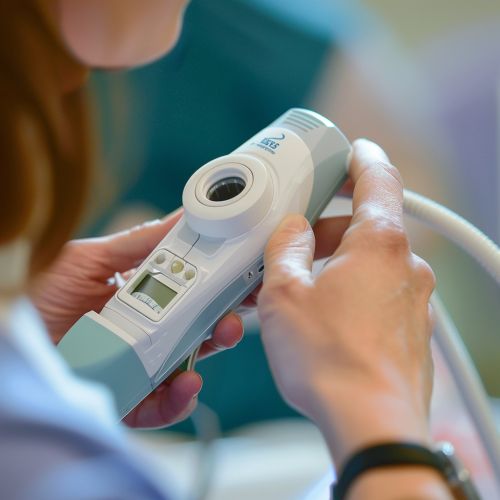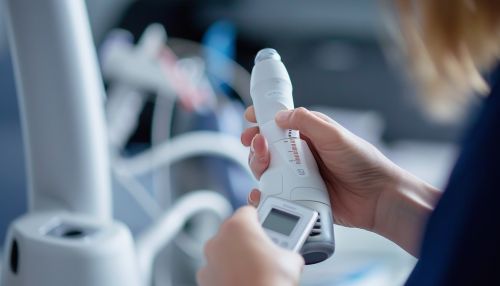Spirometry
Overview
Spirometry is a common type of pulmonary function test that measures the amount of air a person can inhale and exhale, as well as the speed at which they can do so. It is used to diagnose and monitor respiratory diseases such as asthma, chronic obstructive pulmonary disease (COPD), and pulmonary fibrosis.


Procedure
The procedure involves the patient breathing into a mouthpiece that is connected to a spirometer, a device that records the amount and the rate of air that is breathed in and out over a specified period. The patient is typically seated and wears a nose clip to prevent air from escaping through the nose. The patient is then asked to take a deep breath in and then exhale as forcefully as possible into the mouthpiece. This is usually repeated at least three times to ensure consistency in the results.
Measurements
There are several key measurements taken during spirometry, including:
- Forced vital capacity (FVC): This is the largest amount of air that you can forcefully exhale after breathing in as deeply as you can.
- Forced expiratory volume (FEV1): This is how much air you can force from your lungs in one second.
- The ratio of FEV1 to FVC: This ratio helps to determine the presence and severity of obstructive diseases.
Interpretation
The results of a spirometry test are interpreted by comparing the patient's results with predicted values based on their age, height, sex, and race. If the patient's results are significantly lower than the predicted values, it may indicate a respiratory disease or condition. The pattern of changes in the patient's spirometry measurements can also help to differentiate between obstructive lung diseases, like asthma and COPD, and restrictive diseases, like pulmonary fibrosis.
Limitations and Risks
While spirometry is a relatively safe and non-invasive procedure, it may not be suitable for everyone. It requires the patient to follow instructions and make a maximal effort, which may not be possible for some patients due to physical or cognitive limitations. There is also a small risk of shortness of breath or dizziness during the test.
